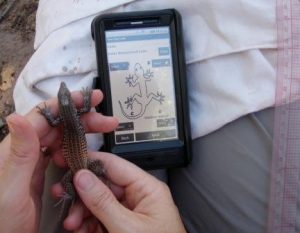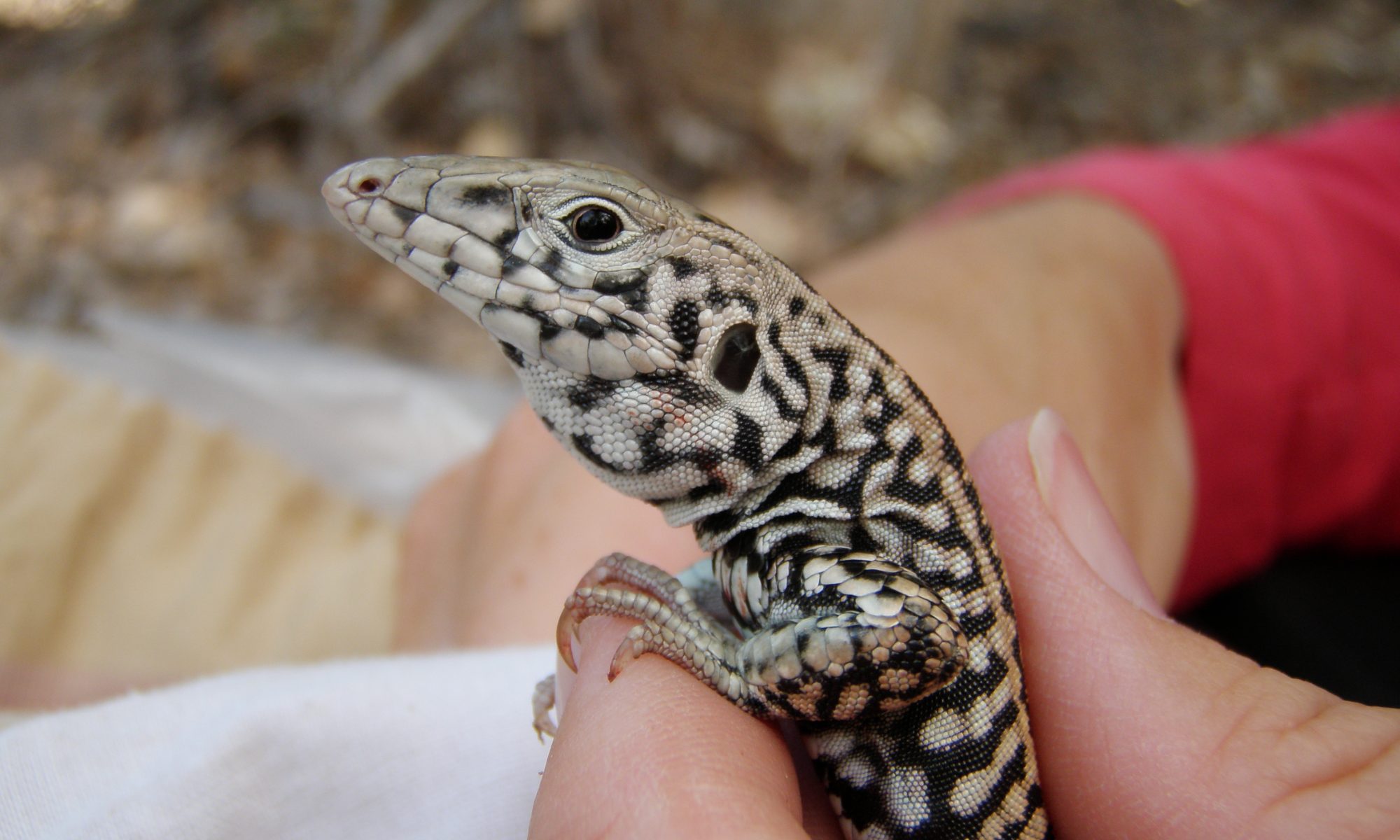
Mark-recapture approaches are often used in the management and conservation of wildlife species to estimate populations and survival. Effective approaches to estimate populations rely on accurate data collection techniques. We designed and applied a mobile application (app) for field-collected data from a mark-recapture study on herpetofauna. Our app was developed for mobile devices on the Android platform. Student designers built user interactions via data entry on a touch-screen using pre-programmed fields, checkboxes, drop-down menus, and keypad entry. Our current version for mobile devices includes features to insure collection of all measurements in the field though pop-up messages and can proof entries for valid formats (e.g., will not allow text entries into number only fields). The app allows the user to query a database in the field to view histories of previously captured animals (e.g., date of capture, length, mass, sex, etc.). The app can assign unique numbers to newly captured individuals by querying the database for unused codes. The app can store field-entered data on the device (or memory card, Android only) and can sync to an online database via a laptop. This app is among the first developed for mobile devices for biologists using mark-recapture techniques and could be developed for use with other wildlife species. See our paper in The Wildlife Society Bulletin for more information. Collaborators include software and computer scientists (Richard Whitehouse and Dr. Tim Lindquist from the ASU Fulton Schools of Engineering).
